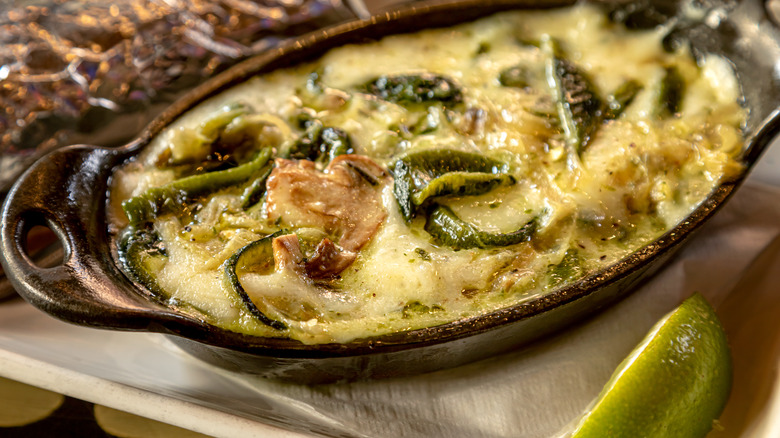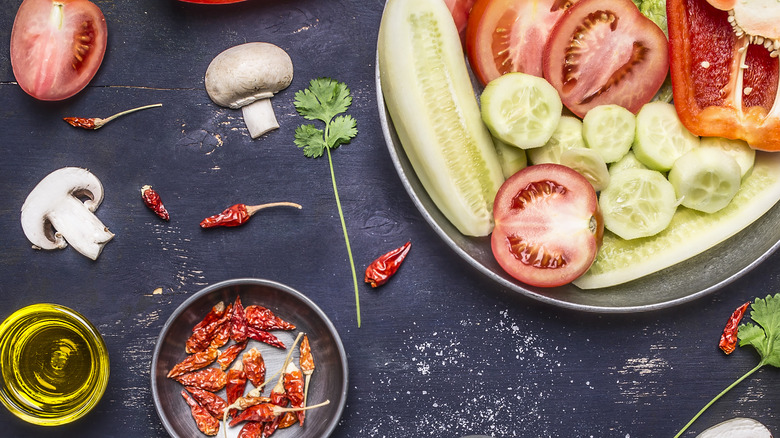Here's Why Seven Layer Dip Should Always Be Baked In A Skillet
Seven-layer dip is a party staple that never goes out of style. From Mexican style to chili to avocado-topped, there's a variety of different recipes to choose from with one constant: a thick layer of cheese.
For many, it's important that the cheese melts completely too, so while glass pans in the oven are a good idea, a skillet is an even better one to maintain that warmth and well-done crunchiness of the cheese on the sides. Skillets are optimal for the same reason they're used for fajitas; the temperature stays high after it's taken off its heating source and served. The liquids and sauces within continue to bubble and depending on the ingredients, a pleasant aroma is maintained for longer.
A fan of spice? Ingredients like jalapeños and red pepper flakes will stay piping for much longer in a skillet, even a standard tabasco will do. Oils like chili oil or vegetable oil mixed with pepper set up an excellent liquid base for a zestier, spicier dip. No matter what ingredients need to be warm, they'll stay warm and buy you time to add layers.
Skillets allow more time to add temperature-sensitive ingredients
Scallions, lettuce, and avocado don't like to be on full heat, so using a skillet while keeping ingredients at the right temperature also allows for necessary additions. This way, a taco dip can still shine without letting the ground beef get too cold before you get to eat it.
For high-temperature variations on seven-layer dip that need tomatoes (which usually adds water content), for example, skillets are your best bet, as the high temperature subdues the watery elements. So instead of a washed out dip with too much water, the dip is served fresh on the skillet and excess water can evaporate. This is also true of dips that use other high-moisture ingredients, like red salsas.
Regardless of ingredient choice, a dip that requires warm ingredients is at home in a skillet, as the industrious pan also creates an opportunity for finishing touches for heat-sensitive ingredients once your dip is warm enough.

